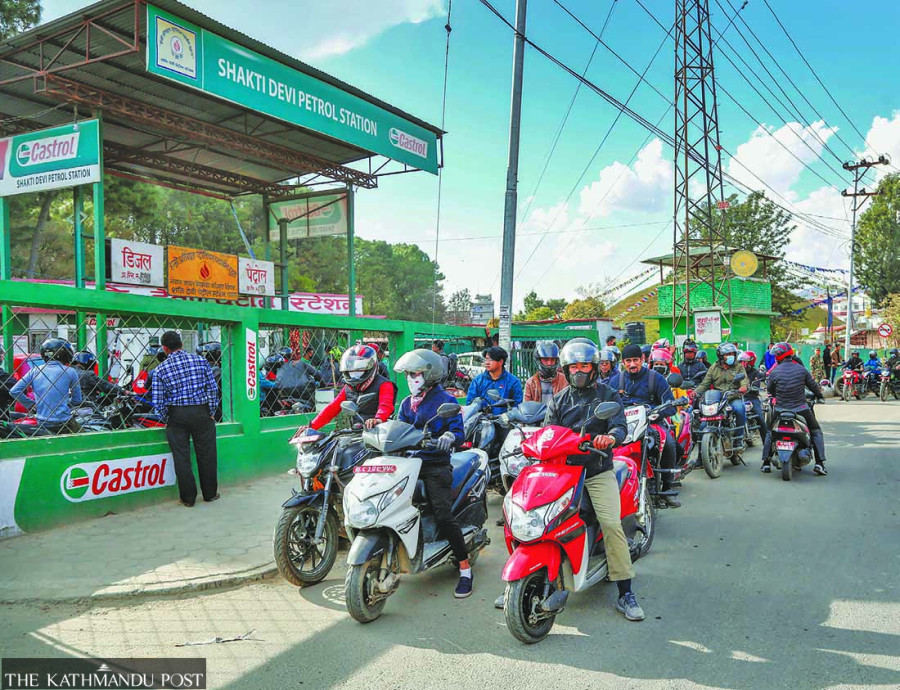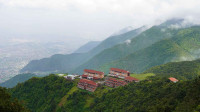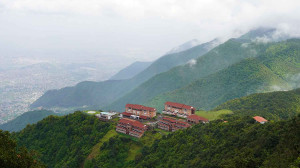Money
Petroleum prices rise to record levels in the wake of Russia-Ukraine crisis
The repercussions of rising prices could be much bigger in countries like Nepal that depend on imported fuel.
Krishana Prasain
With Russia seemingly poised to lunge at Ukraine, a jittery oil market responded by pushing up crude prices to the highest level since 2014, reaching nearly $100 per barrel on Tuesday.
The repercussions of rising oil prices in the global market could be much bigger in countries like Nepal that depend on imported fuel, the country’s petroleum monopoly has warned.
According to international media, mounting tensions between the two former Soviet republics have raised concerns about supply disruptions that would ensue as sanctions look set to cripple Russia, the world's second largest oil exporter and top natural gas producer.
Oil prices surged close to $100 per barrel on Tuesday as major crude producer Russia prepared to send troops into two breakaway regions of Ukraine, prompting Western nations to ready economic sanctions against Moscow.
The Russia-Ukraine conflict started over a month ago following massive troop deployment by Russia near the Ukrainian border. The United States, including Germany and France, have been trying to bring down temperatures by making an effort to convince Russian President Vladimir Putin to pull his army back.
The jump in oil prices is compounding worries about inflation around the world. In Nepal, the price of petroleum products has already reached a historic high.
Inflation breached the central bank’s 6.5 percent tolerance limit and crossed 7 percent in the first five months of the current fiscal year. With price increases at a 64-month high, the coalition government has a tough challenge on its hands.
According to Nepal Rastra Bank, year-on-year consumer inflation stood at 5.65 percent in the first half of the fiscal year.
The country is already struggling with a low growth rate after witnessing a negative economic growth rate of 2.1 percent in fiscal 2019-20 for the first time in four decades.
Nepal’s key economic indicators still have not improved despite the finance minister's claim that the economic situation would improve.
Economists and consumer rights activists have warned that with the country’s economic indicators not performing well, ballooning oil prices may spell yet another disaster for the struggling economy.
“If a country has low-income growth and high inflation, it becomes a double whammy, particularly for consumers,” economist Keshav Acharya told the Post in a recent interview. “Then it could have larger economic repercussions.”
Acharya added that there may be a gasoline-induced political backlash ahead of the election.
Nepal Oil Corporation officials have hinted that if the Russia-Ukraine crisis prolongs, the price of petrol may cross the Rs200 per litre mark.
“We are already incurring massive losses, and existing trends show that there will be an unstoppable rise in gasoline prices,” said Sushil Bhattarai, deputy managing director of Nepal Oil Corporation.
“We are not sure by how much the price will climb, but the situation is definitely getting worse,” Bhattarai said.
Petrol now costs Rs145 per litre and diesel and kerosene each costs Rs128 per litre . The corporation on Friday jacked up the price of petrol, diesel and kerosene by Rs3 per litre each.
This the seventh price increase in the first half of the fiscal year.
“We are losing around Rs4.5 billion monthly; but with continued price increases, the latest hike in prices by Rs3 per litre will not cover our losses,” Bhattarai said. “We may need to raise the price of gasoline by Rs5 to Rs10 per litre if costs keep rising,” he said.
The state-owned corporation has been adjusting the price of petroleum products through the auto pricing mechanism which allows it to raise the price by 2 percent at a time.
Nepal imported petroleum products worth Rs182 billion in the first seven months of the fiscal year ended mid-February. Officials said the import bill swelled as a result of higher prices and it did not reflect a rise in quantity.
The corporation says it incurs a loss of more than Rs16 on every litre of petrol sold. The price would have shot up to Rs160 to Rs165 per litre if it had not been offset by dipping into the price stabilisation fund, company officials said.
Bhattarai said they had used up Rs8 billion out of the Rs14 billion in the price stabilisation fund to pay for oil imports.
“We have been holding discussions with the Ministry of Industry, Commerce and Supply to look for other ways to hold down prices,” he said.
According to Bhattarai, the corporation has been spending Rs35 billion monthly to import fuel due to the steep rise in the price of the product.
The corporation is incurring a loss of Rs16.59 on every litre of petrol sold, Rs12.98 on every litre of diesel sold, and Rs560.75 on every cylinder of liquefied petroleum gas sold, it said.
Nepal Oil Corporation declared itself bankrupt despite having hiked fuel prices to near record levels a month ago.
The state-run oil monopoly earned a net profit of Rs15 billion in fiscal 2015-16, largely thanks to a fall in crude oil prices in the international market.
The surge in profits allowed the corporation to repay its loans totalling Rs32.64 billion to the government and financial institutions, enabling it to declare itself a debt-free institution.




 17.44°C Kathmandu
17.44°C Kathmandu















